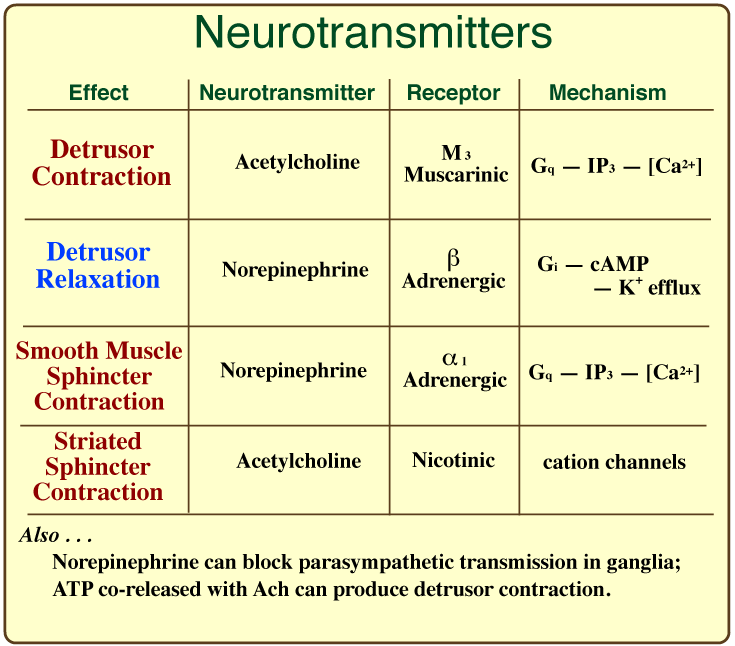Close
Neurotransmitters and Receptors
Neurotransmitters bind with receptors on myocytes, generating either excitation or inhibition.
Detrusor contraction is produced by acetylcholine (ACh) and M3 muscarinic receptors. The receptors are linked to Gq proteins that generate IP3 second messengers that drive Ca++ release from sarcoplasmic reticulum. The elevated [Ca++] initiates the myocyte contraction process.
Detrusor relaxation results from norepinephrine binding to β2 adrenergic receptors linked to Gi proteins which decrease levels of the second messenger cAMP. The result is myocyte hyperpolarization due to increased K+ efflux and decreased Ca++ influx. (Another mechanism for producing detrusor relaxation involves norepinephrine binding to α2 receptors on postganglionic neurons in pelvic ganglia, blocking parasympathetic synaptic transmission.)
Smooth muscle sphincter contraction results from norepinephrine binding to α1 adrenergic receptors linked to Gq proteins that generate IP3 second messengers which drive Ca++ release from sarcoplasmic reticulum. The elevated [Ca++] initiates the myocyte contraction.
Striated sphincter contraction requires release of ACh at neuromuscular synapses, targeting nicotinic receptors which generate depolarization by enhancing cation permeability.
esc closes window

